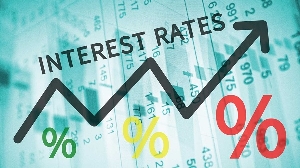 Trading remained strong, led by the middle to long end of the yield curve
Trading remained strong, led by the middle to long end of the yield curve
The domestic bond market is adjusting to a new phase of higher interest rates as yields on long-term government securities climbed above 16 percent this week, with investors seeking value along the yield curve after months of decline.
Trading remained strong, led by the middle to long end of the yield curve, where most deals were recorded.
Renewed selling pressure lifted long-end offers to between 16.15 and 16.30 percent, while short-term bonds stayed around 15.50 percent.
Dealers say investors are rebalancing portfolios and becoming more selective as they test where yields might finally stabilise.
“Trading has been concentrated at the longer end, with investors rebalancing positions and selectively reducing risk,” Constant Capital said in a note to investors. “We are likely to see two-way flows, but with more caution as the market tests these yield levels.”
This surge in activity follows the busiest trading week of the year. Total traded volumes rose 27 percent from the previous week to GH¢2.44billion, the highest so far in 2025. Institutional investors led demand for medium- and long-term bonds, particularly the February 2027 and February 2038 issues which cleared at 15.07 percent and 15.81 percent respectively.
Analysts at Apakan Securities said in a note that: “The secondary bond market has remained active in recent weeks, supported by institutional rebalancing and growing preference for longer-term yields”. They added that investors are positioning for a stable interest rate and exchange rate environment as fiscal and monetary conditions gradually improve.
Interbank Market: Cedi trades at GH¢10.72 to $1
The optimism comes amid a stronger cedi, which appreciated 13.95 percent last week to close at GH¢10.66 per dollar, extending its year-to-date gain to nearly 38 percent.
The rally followed the Bank of Ghana’s continued foreign exchange interventions, including a planned US$1.15billion support package for October.
Analysts expect the currency to remain broadly steady in the near-term as the central bank maintains its liquidity operations.
Still, short-term government borrowing told a different story. The latest Treasury bill auction drew weaker participation, with government raising GH¢2.89billion out of a GH¢6.58billion target – a subscription rate of about 66 percent. The proceeds were not enough to cover maturities of GH¢6.41billion that fell due the same week.
Yields on all short-term bills edged higher, with the 91-day rising 17 basis points to 10.70 percent, the 182-day up 13 basis points to 12.44 percent and the 364-day gaining six basis points to 12.92 percent.
Market watchers attribute the soft auction to a shift in liquidity toward the Bank of Ghana’s Open Market Operations (OMO) bills, which currently offer higher returns.
The central bank raised nearly GH¢10billion through two OMO auctions at an average rate of 21.5 percent.
“Institutional investors are finding OMO instruments more attractive given their yield advantage and short tenor,” a market analyst said.
Meanwhile, the Ministry of Finance released its fourth-quarter borrowing plan, outlining GH¢75.7billion in total issuance between October and December.
Of this, GH¢67.5billion will refinance maturing obligations and GH¢8.2billion will represent new borrowing. The ministry said this plan supports its strategy to lengthen maturities and improve market predictability.
Despite short-term pressures, analysts expect the secondary bond market to remain active.
“Trading volumes should stay elevated as investors continue repositioning toward medium-term maturities,” Constant Capital noted.
Watch the latest edition of BizTech below:
